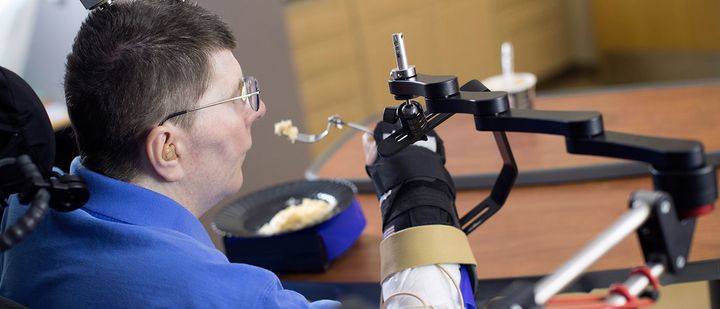A man in America is the first quadriplegic in the world to have his arm and hand movements restored after receiving a groundbreaking brain implant.
Bill Kochevar in Cleveland, Ohio was able to drink from a straw and feed himself mashed potato after his right arm was brought back to life by thought-control technology.
Kochevar said: “For somebody who’s been injured eight years and couldn’t move, being able to move just that little bit is awesome to me…it’s better than I thought it would be.”

The 56-year-old was completely paralysed below his shoulders after a cycling accident eight years ago, and has been unable to live without full-time care.
Now, as part of the BrainGate2 study at Case Western Reserve University, Kochevar has had surgery on his motor cortex, to implant two ‘baby-aspirin-sized’ pill electrodes on the surface of his brain.
These electrodes work by recording the brain activity neurons to generate signals and tell one of 36 electrodes on his upper and lower arms to stimulate the relevant muscles.
Before the surgery could be undertaken, Kochevar had to practice training his brain to remember the relevant signals on a computer.
But he was able to pick it up within minutes as the “code” was still filed away in his memory, according to associate professor of neurology, Benjamin Walter.
Bob Kirsch, Chair of Case Western Reserve’s University, said: “He’s really breaking ground for the spinal cord injury community. This is a major step toward restoring some independence.”
BrainGate2 is a pilot clinical trial that is exploring the feasibility of using brain-computer interfaces to help paralysed people with spinal injuries.
The first BrainGate study discovered that people with paralysis can control a cursor on a computer screen or a robotic arm.
